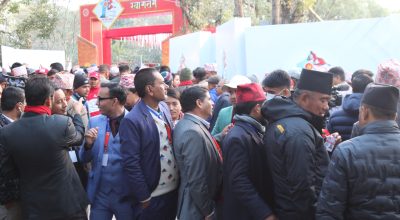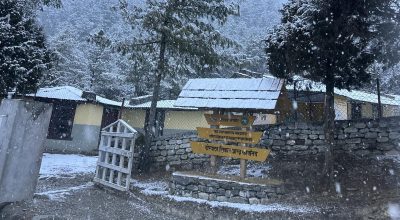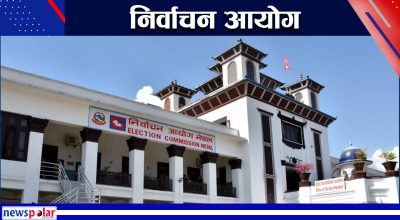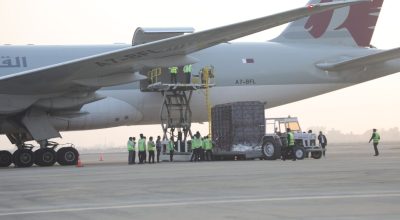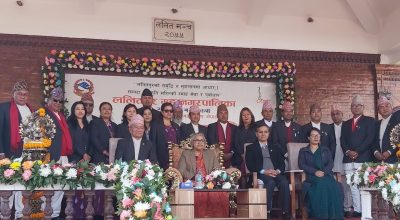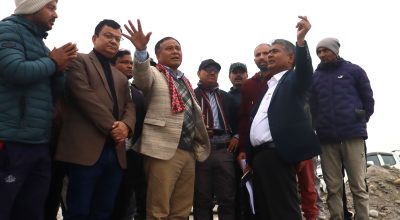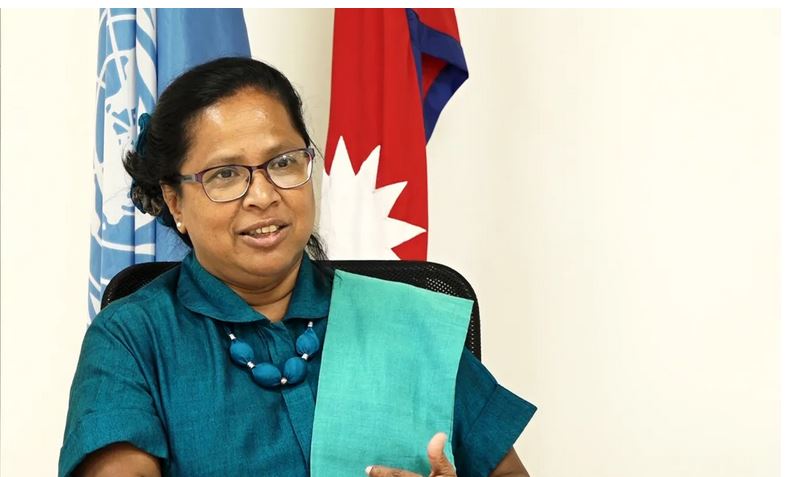
The main challenge of human development is to deal with the problems, conflict, inequality and the complex uncertain situation caused by unequal conditions due to the problems connected with nature. Nepal has to deal with increased natural problems, conflicts, climate change, disasters, pandemics in recent years. These scenario have caused adverse effect on Nepal’s human development. The Human Development Index Report 2022 has tried to depict these issues and find ways and new methods to address these challenging conditions. The United Nations Development Program (UNDP) in Nepal have been engaging and coordinating with development partners as well as government agencies to focus on these pressing issues since long. The Nepal News Agency (NNA) spoke with the Resident Representative of the United Nations Development Program in Nepal, Ms. Ayshanie Medagangoda-Labé recently. Excerpts:
How do you see the status of Nepal as seen in the Human Development Index?
If I take this year’s Human Development Report 2021/2022 and compare it to 1990 Human Development Report data I can definitely say Nepal has been improving like 90% countries in the world. Since 2019, we can observe a bit of a red flag that says something is happening that is not only for Nepal. So we had a slightly bumpy road in 2019, 2020, 2021, and 2022 which we need to take into consideration while doing policy orientations, investments, planning, and budgeting types of work that we are do in development. But overall Nepal is improving and has been improving so we should not just rest on achievements that we made over the last 30+ years. I’m here framing it to the Human development report period 32 years but make sure that we continue to invest in the same way that we did in 1990 particularly in health,education and the basic standards of living of people.
Looking at this year’s report of Nepal, it seems that Nepal is going down a bit, overall in integrated indicators. Is it only because of COVID-19 or are there other factors as well?
As you know most probably for the last 32 years, since the 1st Human Development Report as Dr. Mahbub ul Haq said it was about people, it was the centrality of the people and the real wealth of the nation being the people and that is what basically the report is about and giving options, choice and capabilities being into this whole interrelation between people and their environment. So if you look into the last 32 years, HDR is trying to put forward interactions of people with security, democracy, culture, climate change and different various aspects that interact with human nature and to see how peoples development changes with these different issues. So there is no exception this year 2021/2022 the HDR is trying to put forward, that we are living right now. We definitely had a Covid-19 pandemic but we also live in conflicts and what is happening in the world not only in Russia and Ukraine but elsewhere in other parts of the world there are conflicts. So pandemic affected everyone equally, conflicts affect unequally. Now we have obviously planetary pressures, climate change, pollution and all these pressures coming together making people scared. People are not really settled because of what is happening in the world. So on one hand there are planetary pressures we already started with in unequal situations. Not everyone was equal. On top of it there are planetary pressures. It’s not only about environment and climate, it’s also about conflicts, inequality and access to basics. So this comes together and then there is the pursuit of transformation in the society. How people are trying new ways to cope with this uncertain situation. So that is the second piece of what people are living and what it gives to the people. They are scared again. Can we be able to find a way to cope with this planetary pressure, conflict, climate change over this pandemic? They are trying different ways of working so that’s the 2nd tire of uncertainty. That is where you need protection, If you’re afraid of getting into certain areas where you’re not completely sure about what it is that you’re living in. Then the 3rd one being basically what would prevent you being there what would you basically getting there because of conflicts, disagreements, getting polarized societies, political of course naturally but also being disagreements in the place because of disagreement in the society the community the family that you live so you bringing three types of uncertainties that is what the report tries to illustrate the planetary pressures, the new ways of coping with these pressures, how to try different things to ease these planetary pressures. So we call it the pursuit of transition, the just transition and the three is that what you face by doing social and political polarization and disagreement that comes with it. So these are three types of uncertainties that we call uncertainty complexes. Because when you have different layers it becomes a bit more complex than when you’ve to deal with only one set of complexity. You only have to deal with conflict then fine but if you’ve to deal with the conflict, if you’ve to deal with the failures to act and lose people and if you also have to deal with basically the political violence in a country or societal violence you might be adding yourself uncertainties and that becomes a bit more complicated to deal with. So that is what the report is trying to put forward and also to show how these uncertain complexity is affecting human development, basically your choices, your options for education, health, and standards of living in a country because of these uncertainty complexes. This is what the report is trying to illustrate and also trying to offer some of the solutions, policy orientations that the researchers and the authors think that the country could consider and propose to their policy makers.
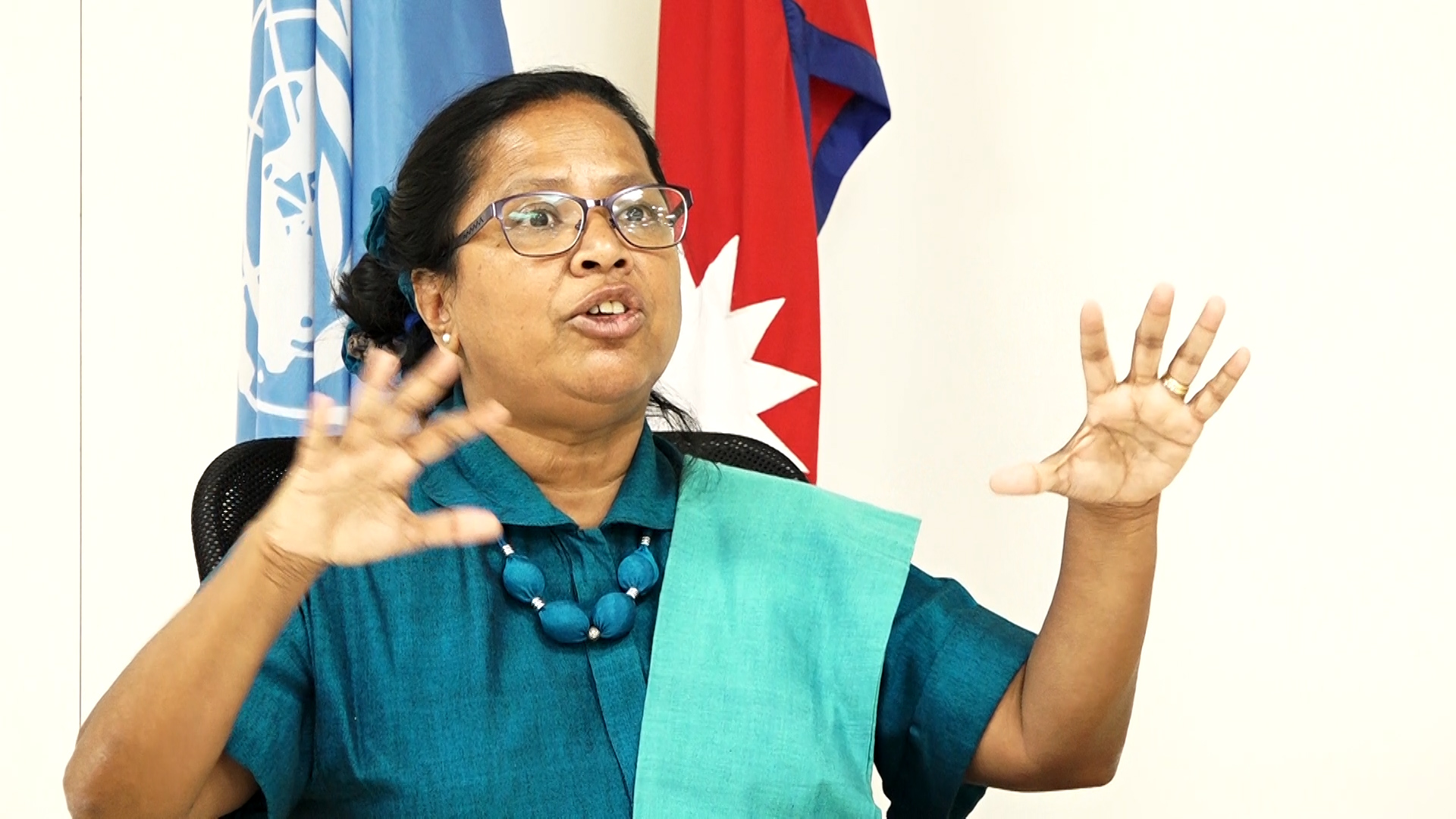
Components such as the government, political party, annual budget, planning and implementation of the country have a vital role for increasing and decreasing the status of human development index of any country. But in Nepal which component do you think has an important role and which component has a weak role?
The choices, capabilities, and options to live better that is what it is about. So if you are looking at only one thing, let’s say the GDP or the Human development index. If you’re trying to propose policy based on the Human Development Index, the GDP or even Human Development Report alone it will not work. Because as we discussed, the uncertainties are complex so you cannot really work on one vertical line. In order to address the complexities of the issues you have to get the horizontal line together. So again the same way you cannot only depend on the government to work on Human Development, the institutions you can not depend only on institutions you’ve to work with the government and the politicians. Who are the politicians ? they’re basically peoples’ representatives. People have voted for them so they represent a voice of people, the aspiration of people in a country and expected to deliver on their electoral commitments and their vision for which they have been voted for. So they have a political vision for a country. A government would execute some of those policies and programs so you need them as well. So you have a parliament which basically would be the politicians, you have the government which will be executing and you have a judiciary which basically makes sure regulatory functions take place. You have development partners who are basically bringing the institutions the international solidarity for government to deliver and also you’ve people that represent through the civil society organizations like the media, researchers, and analysts. So everyone has to come together. Why because policies and institutions alone will not work because as i said it is also about the people.
People’s values change over the course of the period. People’s beliefs, people’s norms, and people’s behavior change. So if you have the right institution, right policy, right planning, right budgeting but again there is a mismatch with what people believe, what people values or people norms. Then there will not be intended resources coming out whatever the policy that you are going to put in place. So this is why the report once again tries to look in two tier of gaps. One gap in the policies and institutions and the other hand one gap on the mismatch between the cultures and norms and the values that would affect whatever you do in terms of addressing the complexities and uncertainty. So it is trying to bring together that means it is also bringing different types of people and institutions together. The roles are different but it brings the government, politicians, and institutions such as planning institutions, budgeting institutions, and strategizing institutions together. So it is a collective vision and definitely a role for everyone including each individual that basically will need to think about the planetary pressures, what it is, and what it would mean to a layperson and what is his or her role in addressing the change of behaviors. Such as a change of lifestyles that to address or to cope with the planetary pressures and what is that transformation that you have to do and what it is that your contribution to the society in order to address or to ease the pressures of these uncertainties. So if we say it is only the government I think we’ll be missing a huge part and what we call is the whole of the government approach or the society approach. The government is a combination of Ministries, Departments and institutions, so you have to bring all of them together. Definitely the Human Development Report 2021/22 put forward that working in silos would not be the right answer to address this uncertainty complex that is layered and bringing it into a more complex situation in countries so I think that is the key message for the governments.
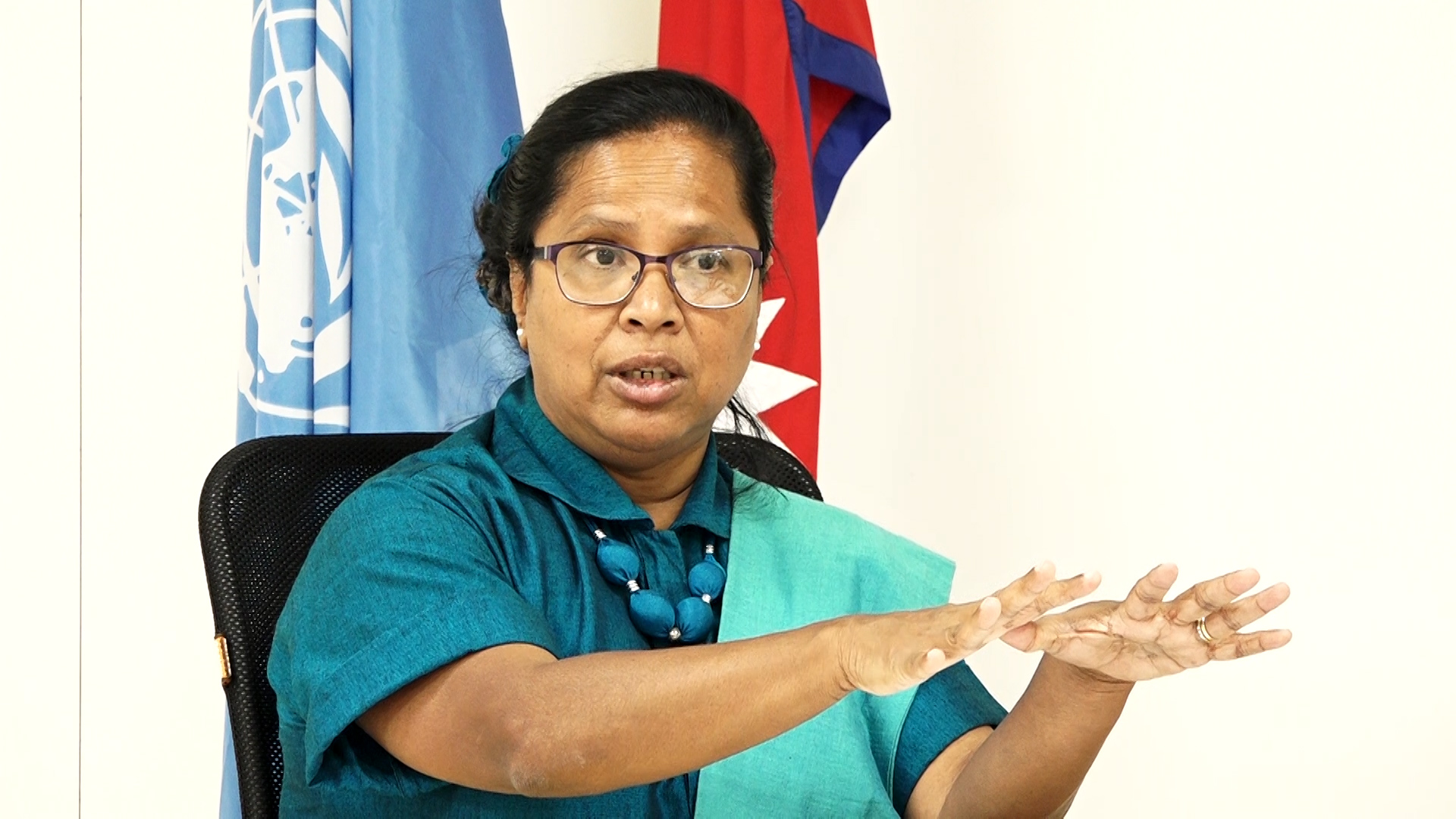
Since all the development partners UN agencies, donors and other parties are engaged in helping the government for collecting, planning, and implementing everywhere we’re supporting this means that we are also in a way responsible. How do you respond to this ?
Of course, the moment that we are using taxpayers’ resources to fund development, accountability lies on everyone. So you have the duty bearers and all the development partners are part of that group of duty bearers in the same account as the government or other institutions. Then citizens including those who are working in the government also fall under the category of right holders they have the rights. So basically it is a role that is interchangeable and everyone is responsible because you have to show results of what you invest in a country and that is we are the mutual accountability which is an important principle of development corporation. It is not only one sided accountability but mutual accountability where everyone mutually accounts for what the party has agreed to work on together. That is why we are also showing the SDGs (Sustainable Development Goals) if you go to the goal no. 17, the partnership is an extremely important goal that brings everyone together. There is a role for everyone within inter-country and intra-country giving the opportunity for everyone to come together and make sure that we go there together by 2030 for Global goals or 2050 for some of the climate targets that we get there by the commitments that we made.
How does this report show the government in terms of meeting the SDG goals, does it indicate anything?
As I said until 2019 most probably many of the SDGs were relatively on track not only in Nepal . But unfortunately with covid we know that SDGs will not be on track. I think the Human Development Report speaks about it. We would have lost 6 years of development gains just after the pandemic. We know that If we are not careful, if we do not invest in health systems in basic services this can be aggravated more, more pandemics can come. I think I read about 10,000 zoonotic species of viruses that are interacting with humans. And that can all of sudden become pandemic or your interactions with nature is such that there is room for anything. This is not where we are not alone, we are not in a kind of vacuum of humans alone and just trying to develop ourselves. We are interacting with animals, plants, natural minerals, and we are with other natural sources. The way that we are expected to behave in that harmony with these other elements, if that is disturbed we do not know the outcome of it. So there is still time to be conscious about that interaction and to make sure that the way that we behave, the way that we use fossil fuels, the way that we exploit biodiversity and forest, the way that we look into the glacier lakes in Nepal for example. Extremely important fresh water resource for billions of people. So if you look into those natural resources in a way that we understand this relationship between humans and the planet, nature coming together we could still make sure those investments that the report is proposing one of the policy orientations in investments or the insurance taking care of people who’re basically left behind. We have some 6 million people in Nepal living below multidimensional poverty but what does it really mean how many meals a day? Can they really pay the medical bills ? Can they send the children to school? So these are like fundamental questions about making sure that is what is important for who currently in Nepal in terms of SDGs to prioritize those and in terms of ambitions that Nepal expressed not so long ago in 2020, 2021 last year in terms of clean energy targets making sure that 10-15% of your energy would be like clean energy and how to make sure that you invest in this clean energy, you diversify clean energy resources, going from hydro to solar to wind and make sure that it is accepted and invested together. E-stoves cooking – how people would accept e-stoves. Electric vehicles you’re speaking about 25% of all the vehicles in Nepal including 2-wheelers would be electric by 2025 and so on. So those kinds of ambition, It is still time to invest and if we do conscious investments in this ambition we declared. For Nepal, there are still time to be back on track even Human Development trend shows since 2019 like other countries there are bumpy situation but its still time for me at least but still time to conscious, conscious investments and conscious and collective decisions are taken politically, economically, environmentally, socially sound and culturally sound decisions are made I think Nepal could be an example.
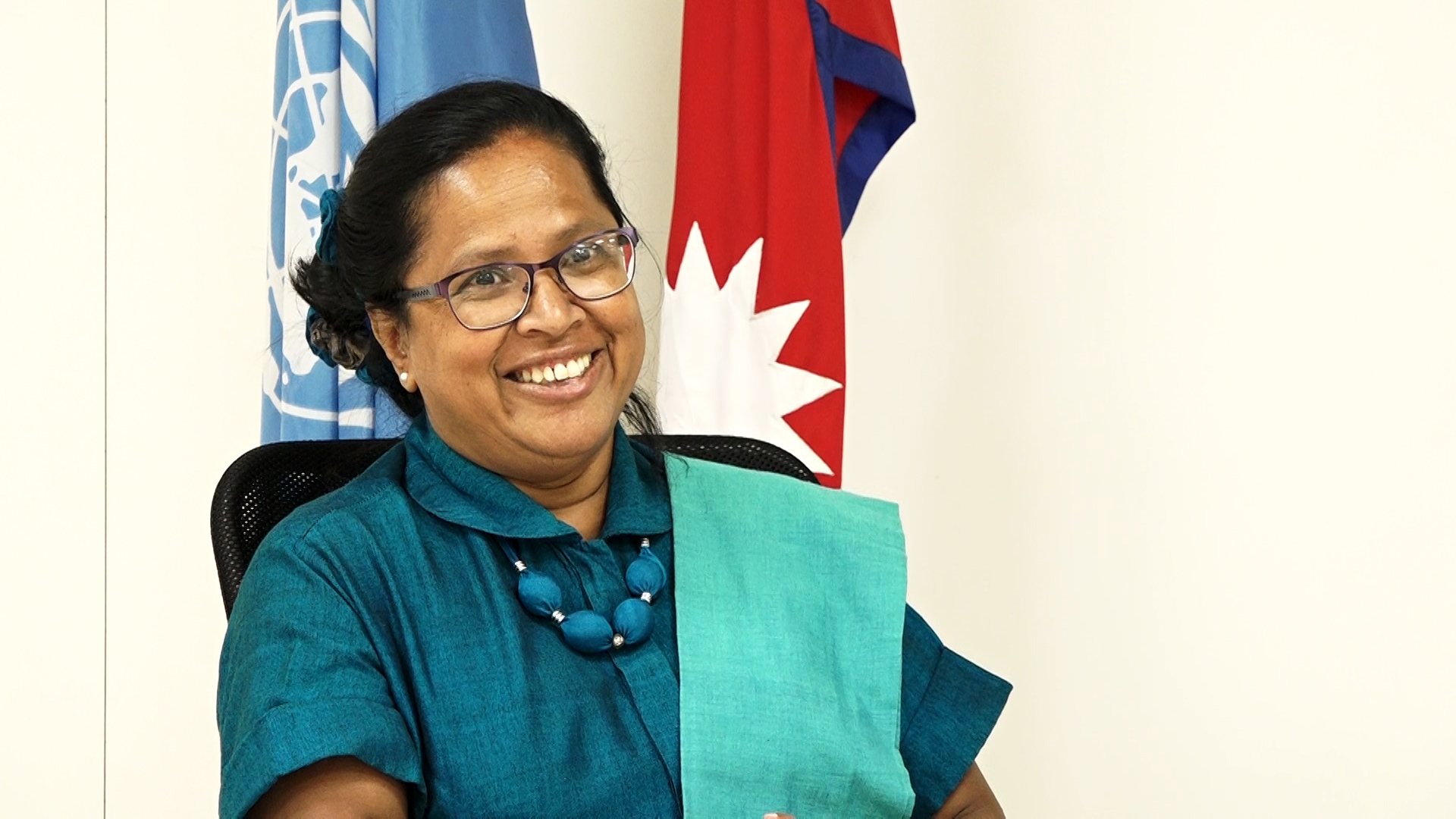
To show that graduating is the graduation path. Nepal is an LDC country that managed to vaccinate more than 96% of its population and almost everyone got one shot of vaccination. This is incredible success story in Nepal which managed from starting from I think less than 1 laboratory in early 2020 to come to a position or to a situation a collective decision a collective effort bringing those vaccines, the personal protective items, the oxygen these are health investments and one of key dimensions of human development and Nepal managed it. We have education. We know that some 8 million kids couldn’t go school for longer for 8 consecutive months. You needed different investments in technology on the internet, access to IT infrastructure to function at school to function basic service delivery and somehow Nepal managed to do that. Nepal managed relief. Obviously there were difficulties in some sectors like migration, remittances went down, migrants returned, tourists left definitely like other countries. They were different errors where we felt and we are still feeling the heat. But definitely you can reverse. As I said conscious investment and to know where the Nepal has the potential and to draw the development partners to those potentials areas consciously and demanding those investment in a way to reduce those planetary pressures to make sure those investments happen in places where you can really make a difference and making sure that those insurance that Nepal government and the development partners would do consciously to protect the people who are left behind who’re not part of social safety net, who are not part social protection in the country. Because in Nepal, 90% are in the informal sector so if you lose a job you do not have a safety net or social protection system formally. Those who are in the formal sector probably have a system. So how do we make sure that insurance is there to protect people to promote freedom of people around and then innovation? It is just not only about technology, IT or what not. It is also about the youths using their capacity and intentions to prepare themselves to better respond to crisis or to respond differently to a crisis, to acquire some capabilities that would help them to attack a problem differently that is what innovation is about that they have that experience and responsibility to try a new way to respond to a crisis that innovation. So if we bring these elements together and if we give them an education that pushes them to think critically, to reason critically and it helps them to basically recognize the freedoms that’s what the report says once again about freedoms protecting individual freedoms and giving space to people to express voices basically representation. So if you bring these elements and work using certain principles of flexibility, inclusion, creativity you can still come back to the SDG path. It is possible and I really believe it is possible and especially in Nepal because when Nepal decides it happens and it is a question about using a right opportunistic moment to perhaps critically think about the development path and take and tap to every opportunity in front of you within the country, in the region, with immediate neighbors beyond in the South Asia region in the global south north together and to see what Nepal can offer while protecting its natural sources for the future.
It seems like local governments are in the forefront of development if they do not act properly. It feels like the human development report appears as it has appeared this year.
I think Nepal is uniquely positioned with federalism. The path Nepal chose to go moving from a unitary system to a federal system breaking either way that your service delivery is happening. So you have 761 different ways to bring those services to the people. Of course it is a bit complex, it needs a lot of coordination, it means a lot of collaboration, it also means a lot of challenges that would arise from coexistence of these different tires together. But I think it’s an opportunity at the same time this is my opinion. You’re very right when you say that who knows people’s problems the most. First of all in the family because you live in the family , then you’re immediate neighbor, then your community, then your little ward or the tole , the municipality so you can climb up to those different tires. We definitely cannot forget about their role in delivering those basic services when it comes to education, health, livelihoods for people making them available in the immediate vicinity where people live. We know that Nepal is not an easy country because of its vast topography and people are quite scattered in different places. To bring the services to these differently located populations is in itself a challenge. So you need first people placed in this local government who can deliver who are trained officials, trained personnel, trained service providers right in the locality. You need the infrastructure, the rural infrastructure, the road, basically the office infrastructure or the IT infrastructure. you need to reach out to those local people that need investment. You need knowledge and training of those people because it’s a new set of responsibility, it’s a new way of working, new way of discharging their responsibilities so that requires understanding their role first, understanding their responsibilities and then delivering it and accounting for what they’re delivering. So in itself is a huge learning enterprise and so this whole local election which we had a few months ago has given you a new cohort, new people who are in the place. Which needs an orientation, understanding what is about human development, what is it mean or SDGs or what’s it mean, what does it mean Paris, a code what does carbon emission (10:43) ambition these terms that we use in the international development arena it is important to be localized and understand that what it means at the local level when you prepare a local plan to invest in the local community or to plan to invest in a budget or negotiate when an investor comes to a local community/municipality or a district or a province. If you want to negotiate a foreign direct investment the provincial authorities or the local authorities need to understand what it would mean to negotiate keeping in mind about the natural resources depletion or the carbon dioxide emission or the pollution that it would bring or the biodiversity loss. How do you balance this natural resources with this investment for that you need strong negotiators, you need to understand and also you need to factor into your bill basically when you calculate what it would cost to the people or the society who live not only today but who are also the people of tomorrow so that basically the sustainability of any investment need to be understood by the provincial and local authorities and that needs time. So this is why I think as we do the government task it is gradually increasing the knowledge – based skill sets of the local electors or provincial elected groups.
Make sure that they have the knowledge, skill and the competency that they need and the freedom of action so that they can be meaningful when they do development at the local level. It is not enough to do it with the local people. It is not sufficient to work only with the locals or the provincial authorities, the federal structure also has a role and responsibility to play. It is not only about one government solution everyone brings a coordinated reflection. Everyone has great ideas, they have different ways of thinking, different ways of looking at a problem and some of those conflicts and polarization happens when these ideas are not listened to or not being respected so this is where to disagree is a good thing that shows there is a debate about it. Even with this HDR not everyone might agree they might’ve other ideas that’s the one way of looking at things. There might be other ways of looking at it but that is what we want to create. UNDP is to create that debate so that debate forces people to do critical thinking. Is it good? Am I reasoning right or are there any other ways to do the same thing can we learn from another country? So if you look immediately I know Human Development Report comes most of the countries they go to the statistical annex and they look at not even their country as we use to say in UNDP we look up to the neighbors rank first even before our own rank so this is where basically I would like to look at is that where I was in the last year, where was I in the 2020 or 2021 not because that was a different group who was managing but it was because that would be the way of showing progress by decade or yearly and see that what is the trend how to address that trend so you need that is to bring that is the federal system, federal government you need the provincial government you need the districts still. You know the court system for example is still at the district level. It takes time to do that transition so if people understand not only their role i mean the elected body but also the role of other tires and if you do not duplicate the service lines but you compliment, you work on the subsidiarity, the governance structures, I think it is a big and great opportunity for Nepal for this federalism structure to bring the most basic services to the people living farthest corner of any border of Nepal that is how I see it.
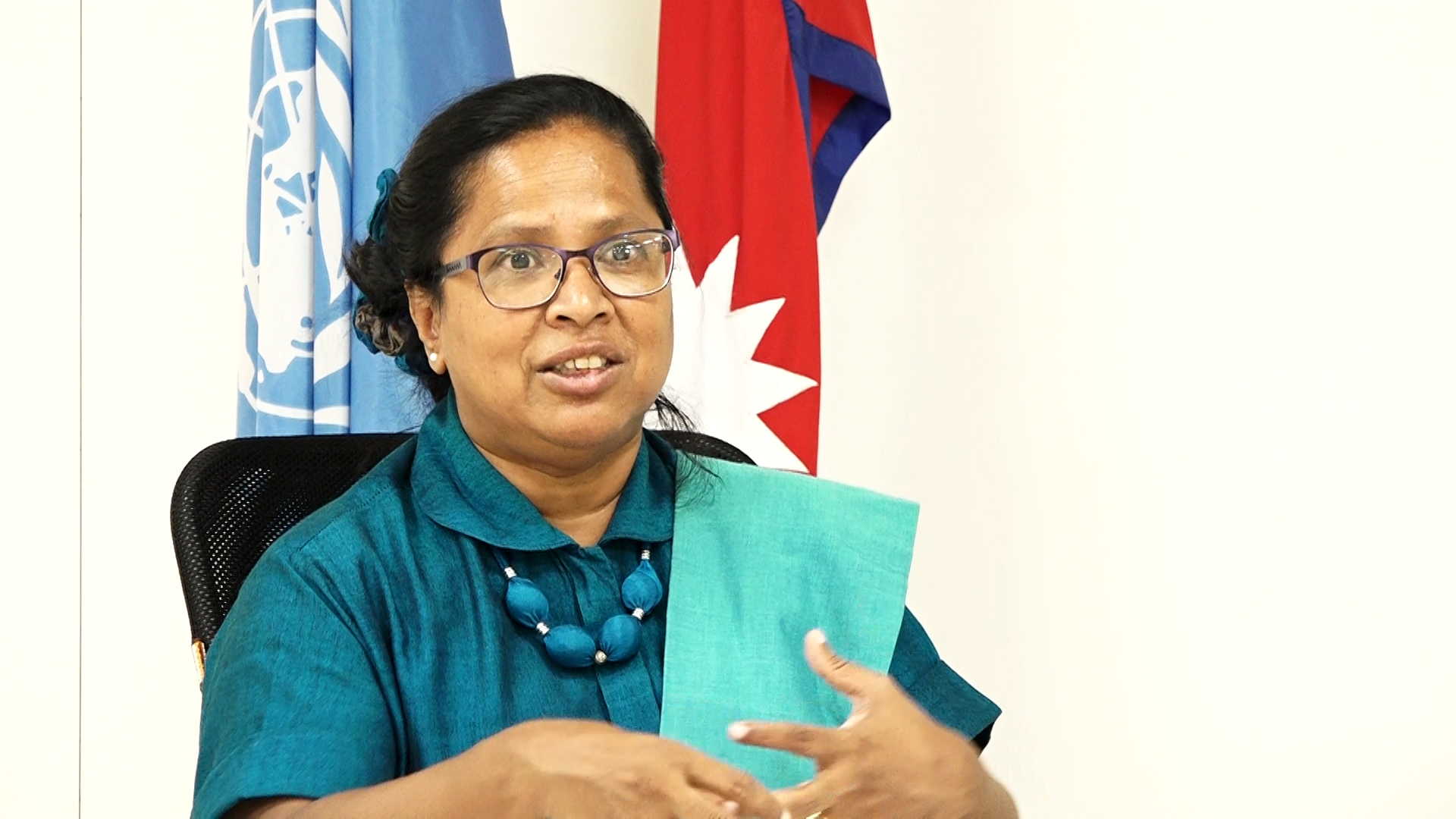
Having said this, we everybody has a role to play. What do you think that the media can actually do individually in this report ?
I think Media should not only look at the Human Development Index and say that Nepal lost or gained that should not be the headline I think it could go beyond , it should really go to the analytics of the report basically there are three pieces in the report you have to you’ve the whole theme explained through the chapters then you’ve the methodology then statistical annexes. The balanced reading of all these pieces. It would be very very useful and I think also if you look into gender dimensions for example this is sometimes we miss. We look into the overall human development progress but we miss out how the men fear or how the women fear compared to men or the women or vice versa and what is it or what is it mean in terms of reproductive health or the empowerment or the market access for females for women for gender inequality index. So if you see that you definitely could see that certain provinces will have to double their efforts to bring their indicators a bit higher and to make sure they’re on the right track. Nepal has done a lot of analytics for example SDG baselines in all 7 provinces had done the SDG baselines so have some data over there you have SDG analytics for whole Nepal clustered analytics are there. So media could really go beyond the hour of the publications or the launching meaning that when you do a launch that you are interested in the report. I mean we all sometimes do that basically going back to the previous report and trying to kind of bring back history and reminding the general public or the policy makers, decision makers about different commitments and different ways that a country can do and also to do some comparisons similar countries not necessarily neighbor A neighbor B with similar countries like Nepal. Like so, you have a good cohort of LDC to look at, so look at it where Nepal can learn from other developing countries or the LDCs in terms of different dimensions and bring those stories forward and have creative debate about it. Media can also train your younger journalists to Human Development concepts where it comes from and why it mattered in 1990 and what is the relevance in 2022 or what has changed between 1990 and 2022 a concept which has a certain rise in death at that point of time and how it has evolved. So those are basically giving substance for younger generation to really do this critical thinking beyond index and to go to the report make sure that it is translated into Nepali and other languages where people can access this and the university students who are your future decision makers in the country can read and understand because these reports are in english so how do we make sure these knowledge is accessible to the students so those are the things that media can definitely make a difference and create debate and go to university and bring students your television platforms and ask them to speak about to read about not UNDP representative or others to create interest and curiosity about the development issues amongst the students and make sure that the debate takes place that’s we called a thought leadership, critical thinking analytics that will definitely shape their academic path and ultimately will get into their DNA in the way that they would be behaving in the country to make decisions.
___





